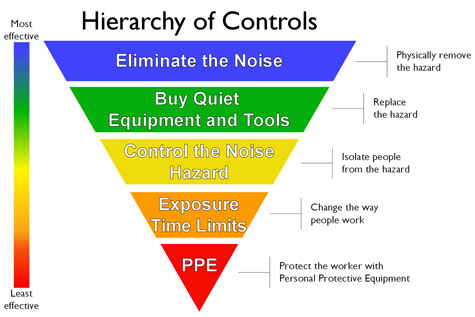
In the United States, about 40 million adults aged 20–69 years have noise-induced hearing loss, and about 1 in 4 adults who report “excellent to good” hearing already have hearing damage. Employers and workers have a responsibility to protect their hearing both on and off the job.
October is National Protect Your Hearing Month (#NPYHM), and employers and employees can find a variety of resources to help educate them on the effects of loud noises and how to protect themselves and their workers. Unlike other jobsite hazards, loud noises don’t just occur on the job. Concerts, vehicles, and large group events can do as much damage as noise on the job.
OSHA standard 1910.95 states that employers must provide noise protection for their employees when sounds are above an average of 85 dB per eight hours. Note that if sounds are above 85 dB for less than eight hours, noise protection may be required. Normal conversation is about 60 dB, and a motorcycle engine is about 95 dB. Noise above 120 dB can cause immediate harm.
The hierarchy of controls shows a variety of ways to protect workers’ hearing, from the most effective to least effective. Elimination of noise pollution is the most effective way to prevent hearing loss. If the noise cannot be completely eliminated, quieter equipment and tools should be purchased to reduce exposure. Employers are responsible for implementing engineering and administrative controls, which include constructing barriers or redesigning equipment and limiting worker exposure time. Note that the last resort for hearing protection is personal protective equipment (PPE). This includes earmuffs, earplugs, and ear caps.
To ensure that your workers know the dangers of working in noisy environments and how to protect their hearing, ACO offers a hearing conservation course. This course will help employees learn how sound impacts their hearing and identify controls and best practices for hearing protection.
For more information on noise and hearing loss prevention, see NIOSH’s website.
Related Posts